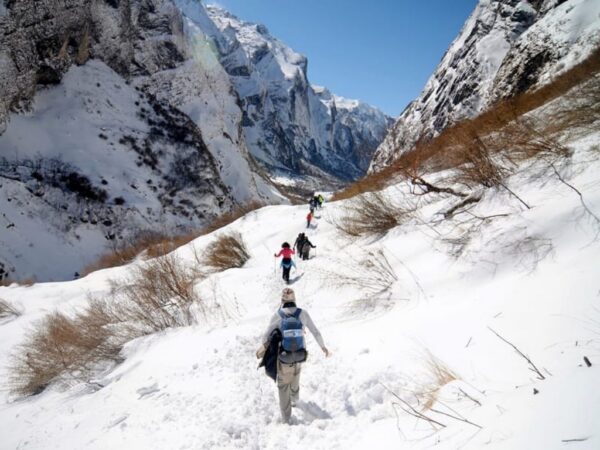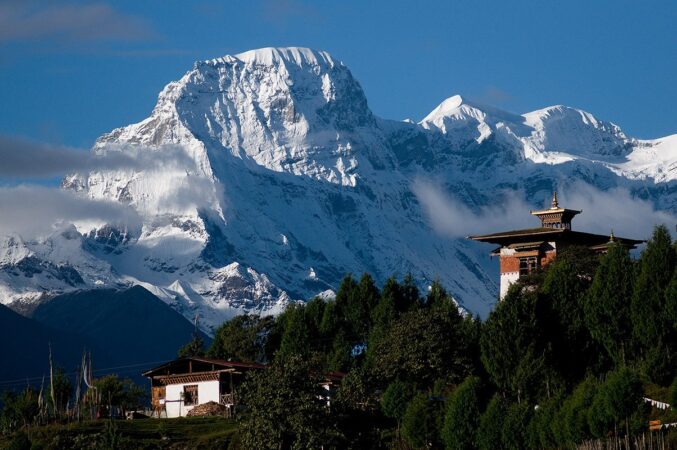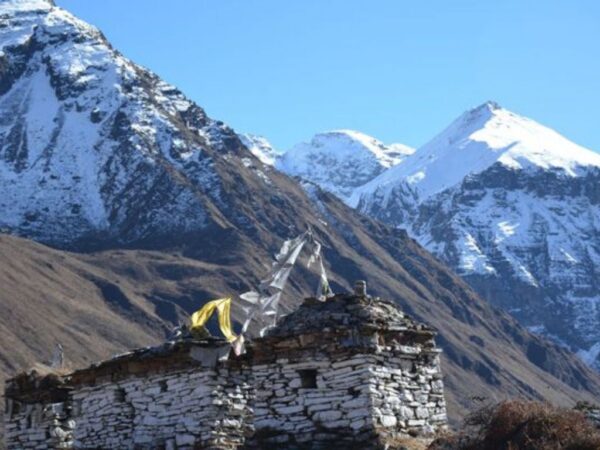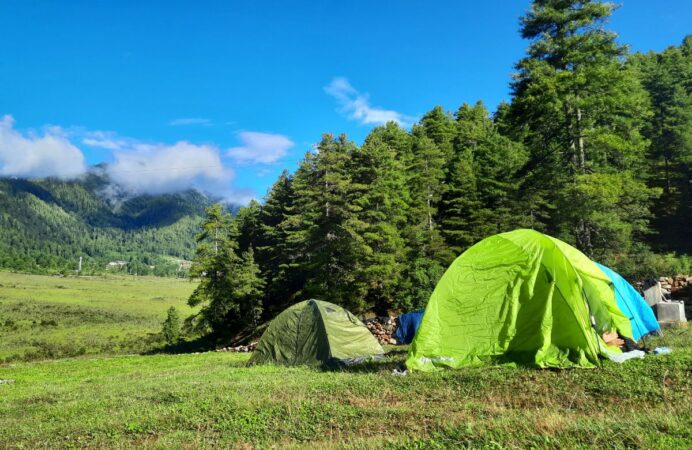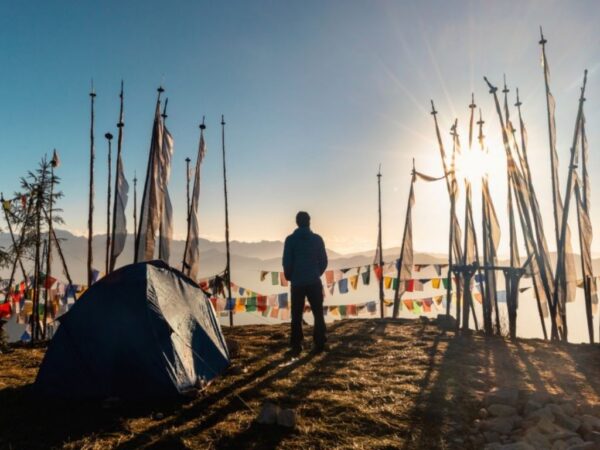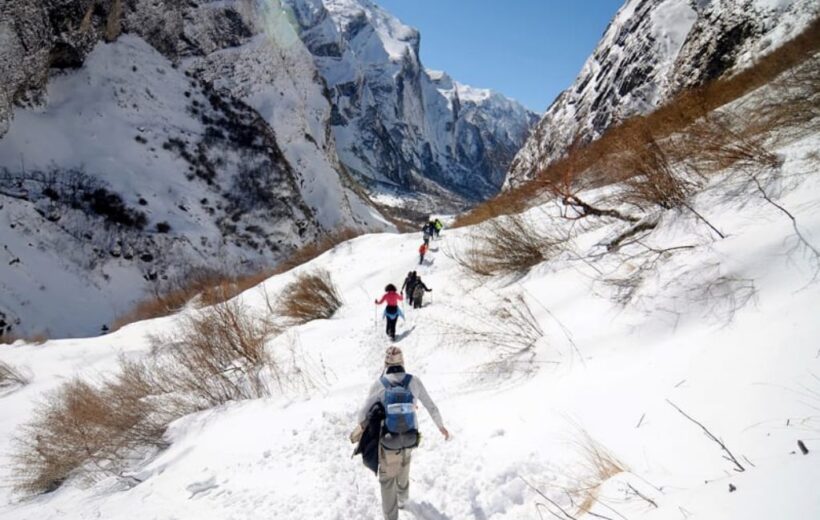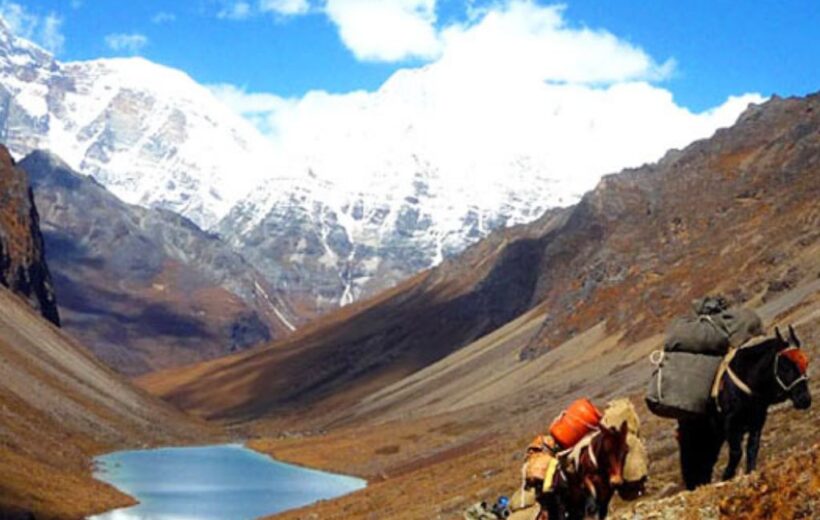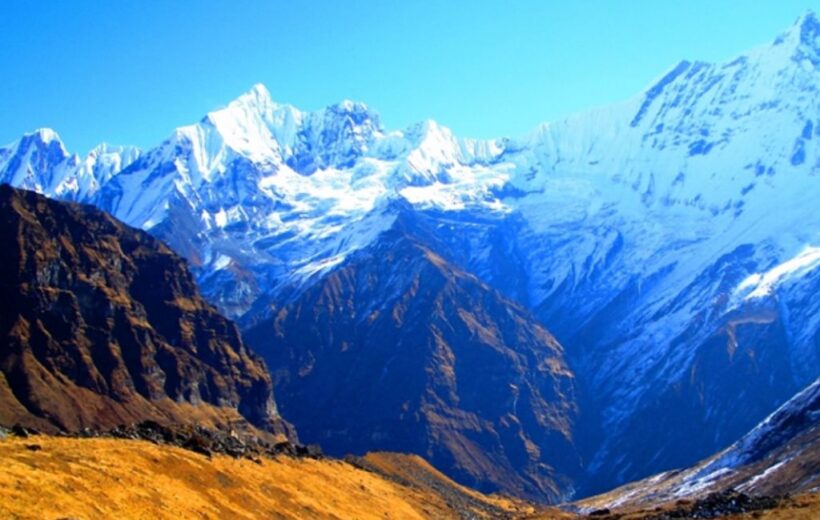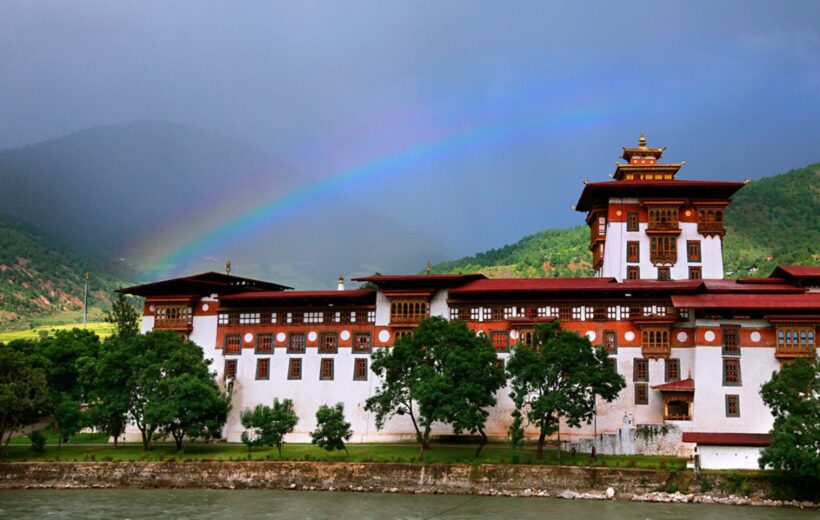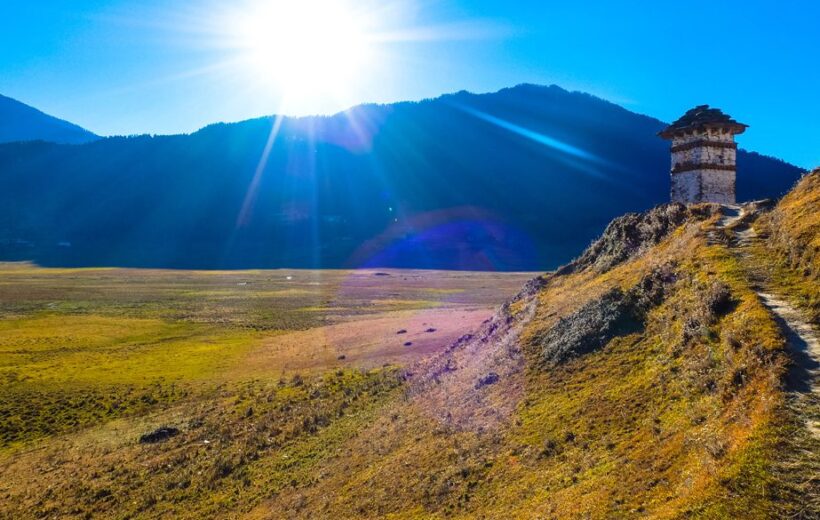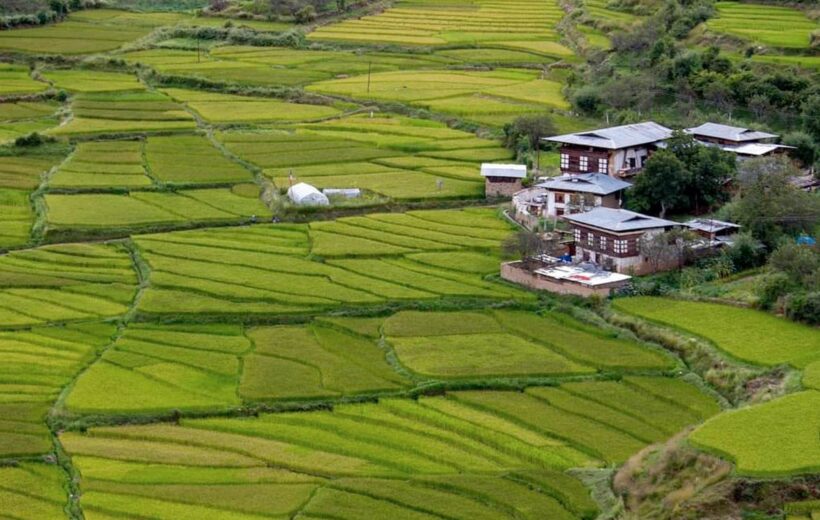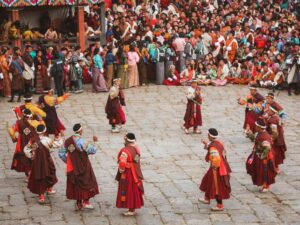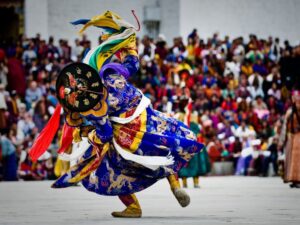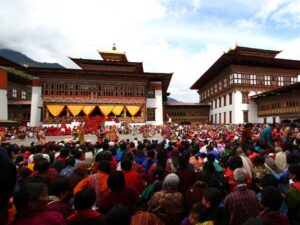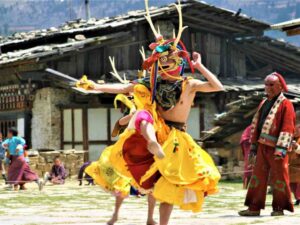Overview
Embark on an unforgettable 12-day journey through Bhutan with World Perfect Tours. This meticulously curated itinerary blends cultural exploration, historical sightseeing, and thrilling trekking adventures. From the moment you land in Paro, you’ll be immersed in Bhutan’s rich heritage, visiting ancient monasteries, national museums, and majestic fortresses. As you trek through stunning landscapes, from lush valleys to alpine meadows, you’ll be treated to awe-inspiring views of Bhutan’s highest peaks. This tour offers the perfect balance of cultural immersion and outdoor adventure, ensuring a deep connection with Bhutan’s unique beauty and traditions.
Included/Excluded
- The Bhutan SDF
- All accommodations
- Meals and mineral water
- A licensed English-speaking guide
- A driver and vehicle
- Air fare
- A visa fee of US $40
- Alcohol
- Gifts/Souvenirs
- Travel insurance and personal bills
- Museums & Monument Fees
Tour Plan
Day 1: Arrival in Paro
Upon your arrival at Paro airport, a World Perfect Tours representative will greet you and assist with all necessary formalities. You will be escorted to your hotel, where you can unwind. In the evening, take a leisurely stroll through the charming town of Paro, exploring its local market. Overnight stay at your hotel in Paro.
Day 2: Explore Paro
Begin your day with a visit to Ta Dzong, initially built in 1651 as a watchtower and later converted into Bhutan’s National Museum in 1968. The museum houses a fascinating collection of art, relics, religious thangkha paintings, postal stamps, coins, and handicrafts. Next, explore Rinpung Dzong, known as “the fortress of the heap of jewels,” built in 1646, which now houses the district’s government offices and the monastic body. In the afternoon, visit Kyichu Lhakhang, one of Bhutan’s oldest and most sacred shrines, built in the 7th century by Tibetan King Songtsen Gampo. Spend the night at your hotel in Paro.
Day 3: Trek from Paro to Shana (17km, 5-6 hours)
Your trekking adventure begins with a gradual descent from Drukgyel Dzong (2,580m) on a broad trail. The path winds through beautiful millet fields and well-maintained rice terraces before entering woodlands and apple orchards. As the valley opens up, you’ll reach the Gunitsawa army post (2,810m), the last stop before Tibet. Continue ascending to just below Sharna Zampa (2,870m), where you’ll find several excellent camping spots in meadows surrounded by trees. Camp overnight.
Day 4: Trek from Shana to Soi Thangthangkha (20km, 7-8 hours)
The trail follows the Pa Chu (Paro river), meandering through forests of pine, oak, and spruce. Enjoy a picturesque hike with occasional ascents and descents. After crossing a bridge to the river’s left side, pause for a hearty lunch. Continue trekking through rhododendron forests before reaching your campsite at Soi Thangthangka (3,750m). Camp overnight.
Day 5: Trek from Soi Thangthangka to Jangothang (19km, 7-8 hours)
Today’s trek offers gradual ascents with rewarding views. The trail takes you past an army camp and beyond the tree line, providing stunning panoramas of the surrounding mountains. After a warm lunch at a yak herder’s camp, continue deeper into the valley to reach your campsite at Jangothang (4,040m), where you’ll be greeted by breathtaking views of Jomolhari and Jichu Drake. Camp overnight.
Day 6: Trek from Jangothang to Lingshi (18km, 7-8 hours)
After a short walk alongside the stream, the trail crosses a bridge to the right bank and begins a steady ascent. You’ll be treated to magnificent views of Chamolhari, Jichu Drake, and Tserimgang. The trail then leads across a broad valley floor, climbing towards Nyele-la pass (4,700m). From the pass, descend gradually to your campsite at Lingshi (4,000m), enjoying expansive views of mountain peaks and Lingshi Dzong. Camp overnight.
Day 7: Trek from Lingshi to Shodu (22km, 8-9 hours)
Today, the Jomolhari trek path diverges onto the Laya-Gasa route. The trail ascends toward a small white chorten on a ridge above the campsite before turning south and following the Mo Chu valley. The path climbs gradually, staying on the west side of the valley, before crossing the river and making a steep ascent to Yeli-la pass (4,820m). On clear days, enjoy views of Chomolhari, Gangchenta, Tserimgang, and Masagang from the pass. Continue descending alongside a stream to reach Shodu (4,100m), where you’ll camp in a meadow with a chorten. Camp overnight.
Day 8: Trek from Shodu to Barshong (16km, 6-7 hours)
Re-enter the forest as you descend through mixed alpine woodlands of rhododendron, juniper, and other trees along the Thimphu Chu. The trail offers spectacular views of rugged cliff walls and waterfalls. After a riverside lunch, continue on a gradual ascent until you reach the ruins of Barshong Dzong (3,600m), where you’ll set up camp nearby. Camp overnight.
Day 9: Trek from Barshong to Dolam Kencho (15km, 5-6 hours)
Today’s trek begins with a gentle descent through dense forests of rhododendron, birch, and conifers before dropping steeply to meet the Thimphu Chu. The trail follows the left bank of the river, climbing over ridges and descending into gullies with side streams. Finally, the path climbs around a cliff face high above the Thimphu Chu, leading to a picturesque pastureland where you’ll camp for the night at 3,600m. Camp overnight.
Day 10: Trek from Dolam Kencho to Dodena, then drive to Thimphu (8km, 3 hours)
The trail ascends steadily through a forest of conifers and high-altitude plants to a pass at 3,510m. It then descends steeply to the river, following it to the road’s southern terminus at Dodena (2,600m). Upon arrival, you’ll be met by our transport team and driven to Thimphu. Overnight stay at your hotel in Thimphu.
Day 11: Thimphu to Paro
Spend the day exploring the sights of Thimphu Valley. Depending on the time available, visit the National Memorial Chorten, Tashichhodzong (the fortress of the glorious religion), National Library, Institute for Zorig Chusum (a school for traditional arts and crafts), National Institute of Traditional Medicine (outside only), and the Handicrafts Emporium. In the evening, drive to Paro. Overnight stay at your hotel in Paro.
Day 12: Departure from Paro
After breakfast, you’ll be driven to Paro airport for your departure flight, marking the end of your remarkable Bhutan journey. Safe travels to your next destination!
Tour Map
Frequently Asked Questions
Bhutan is a year-round destination. There are four seasons: summer (June to August), autumn (September to November), winter (December to February) and spring (March to May). But because of the range of altitudes in the country, and the influence of the north Indian monsoons, the climate is incredibly varied.
In the south, the humid, subtropical climate is fairly consistent year-round, with temperatures between 15oC and 30oC. Central Bhutan, with its temperate forests, has a more seasonal climate, with warm summers and cool, dry winters. The northern regions are much colder during winter. Because of the high altitude, mountain peaks are snowy year-round and the lower reaches remain cool in summer.
In summer, the Indian monsoon season runs from late June or July to late September, mostly affecting the southern regions. Most farming activities take place in the summer, when crops thrive in verdant landscapes.
Autumn, from late September or early October to late November, follows the rainy season. It is characterised by bright, sunny days and some early snowfall at higher elevations. It’s the season of feasts and festivals as farmers reap the fruits of their work.
From late November until March, the crisp, clear and sunny winter sets in, with frost throughout much of the country and snowfall common above elevations of 3,000 metres. The winter northeast monsoon brings gale-force winds at the highest altitudes through high mountain passes, giving Bhutan the name Drukyul, which means Land of the Thunder Dragon in Dzongkha (Bhutan’s national language).
Bhutan’s generally dry spring starts in early March and lasts until mid-April. It is a botanist’s delight, with nature in full bloom. Summer weather commences in mid-April with occasional showers and continues to late June.
Visitors of all nationalities, except those from India, require a visa before entering Bhutan. For all visitors, except those from Bangladesh and the Maldives, this visa must be applied for and approved in advance of travel. Visitors from Bangladesh and the Maldives also require a visa, but this can be applied for and approved either in advance of travel or upon arrival in Bhutan.
Visitors from India are able to apply for a permit but are required to hold an Indian passport or an Indian voter ID card. For Indian nationals under the age of 18, a passport or a birth certificate can be used to enter and they must be accompanied by a legal guardian.
Nationals from Switzerland and Thailand holding diplomatic or government-official passports are eligible for a visa at their port of entry.
A correctly input visa application can take up to five days to process.
There is a one-off fee of US$40 for the processing of your application. This is payable at the same time as your Sustainable Development Fee (SDF), as part of the process of submitting your visa application.
All treks must be undertaken with an accredited tour operator or guide. Your tour operator will assist you with all the necessary logistics and safety precautions.
Please contact our hosts for the Department of Tourism’s list of approved tourism services.
The Sustainable Development Fee (SDF) is a daily levy paid by visitors to support Bhutan’s development. Since the kingdom first opened its doors in 1974, guests have played a critical role in our country’s growth.
The SDF is collected by the national exchequer and funds are allocated to various projects that create long-term, sustainable opportunities for the Bhutanese people, through free healthcare, education and training, upskilling the tourism and hospitality industry, improved infrastructure, environmental preservation and conservation, cultural preservation programmes and initiatives that support local businesses and economies. The SDF is also a vital means of maintaining the exceptional forest cover and carbon-neutrality for which our small nation is world-renowned and globally critical. The SDF also helps us to ensure that we can continue to offer guests tranquillity and an intimate experience.
The SDF is USD 100 per night for adults from all countries except for India. Children aged between 6 years and who have not yet turned 12 are eligible to pay USD 50 per night. Children who have not yet turned 6 years old do not have to pay any SDF.
The SDF for Indian nationals (showing a valid Indian passport or Voter ID card) is Nu. 1,200 (or the equivalent amount in Indian rupees) per person, per night. Children aged between 6 years and who have not yet turned 12 are eligible to pay Nu./INR 600 per night. Children who have not yet turned 6 years old do not have to pay any SDF.
SIM cards can be purchased from the Paro International Airport’s visitor information centre on arrival, or from branch offices of Bhutan Telecom and TashiCell, or from authorised agents in towns.
There are no rules about what visitors should wear. However if you are planning to visit places of religious significance, respectful smart-casual clothing that covers your body from shoulders to knees is appropriate and appreciated.
Yes, permits are required to enter National Parks in Bhutan. However the process can be done online and the permit should be issued quickly. Please visit this link for more information: https://docs.google.com/forms/d/e/1FAIpQLScM4k5SPaGI_GnV6NJuQHstpS5ai9G4wOlpLSq0fsy73EZK7A/viewform
While most monuments in Bhutan are free, some are chargeable. For the full list of monument fees, please click here for more information. Children below 18 years will have a 50% concession and children aged five years and below will be exempted. Most monuments are open from 9am – 5pm each day. In June 2023 it was announced that foreign visitors can now visit monuments whenever they are open to the general public, without any restrictions.

